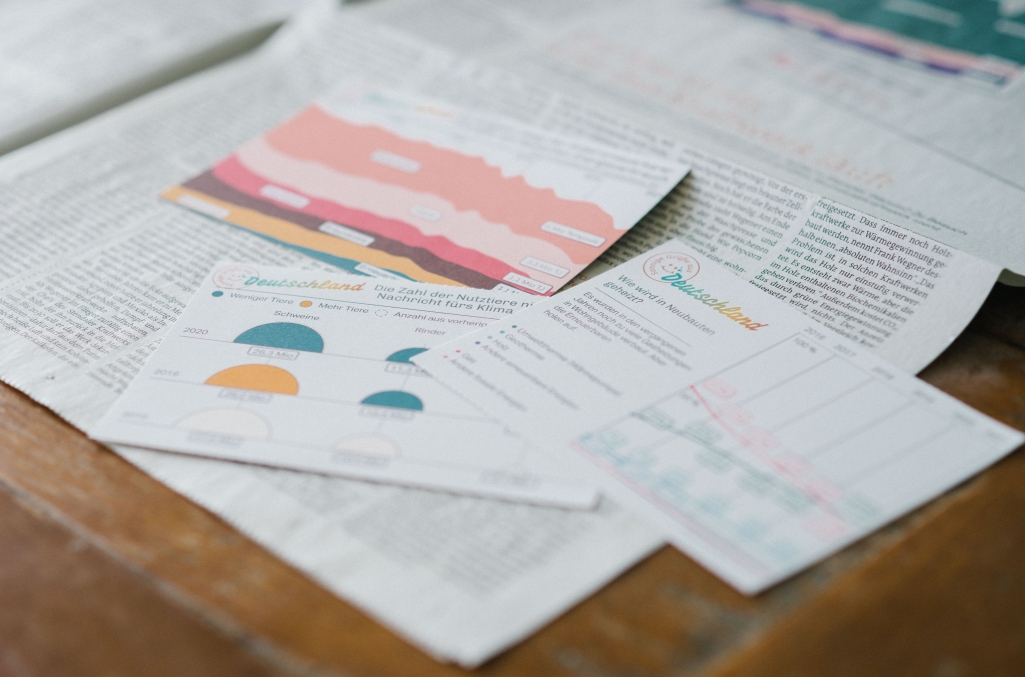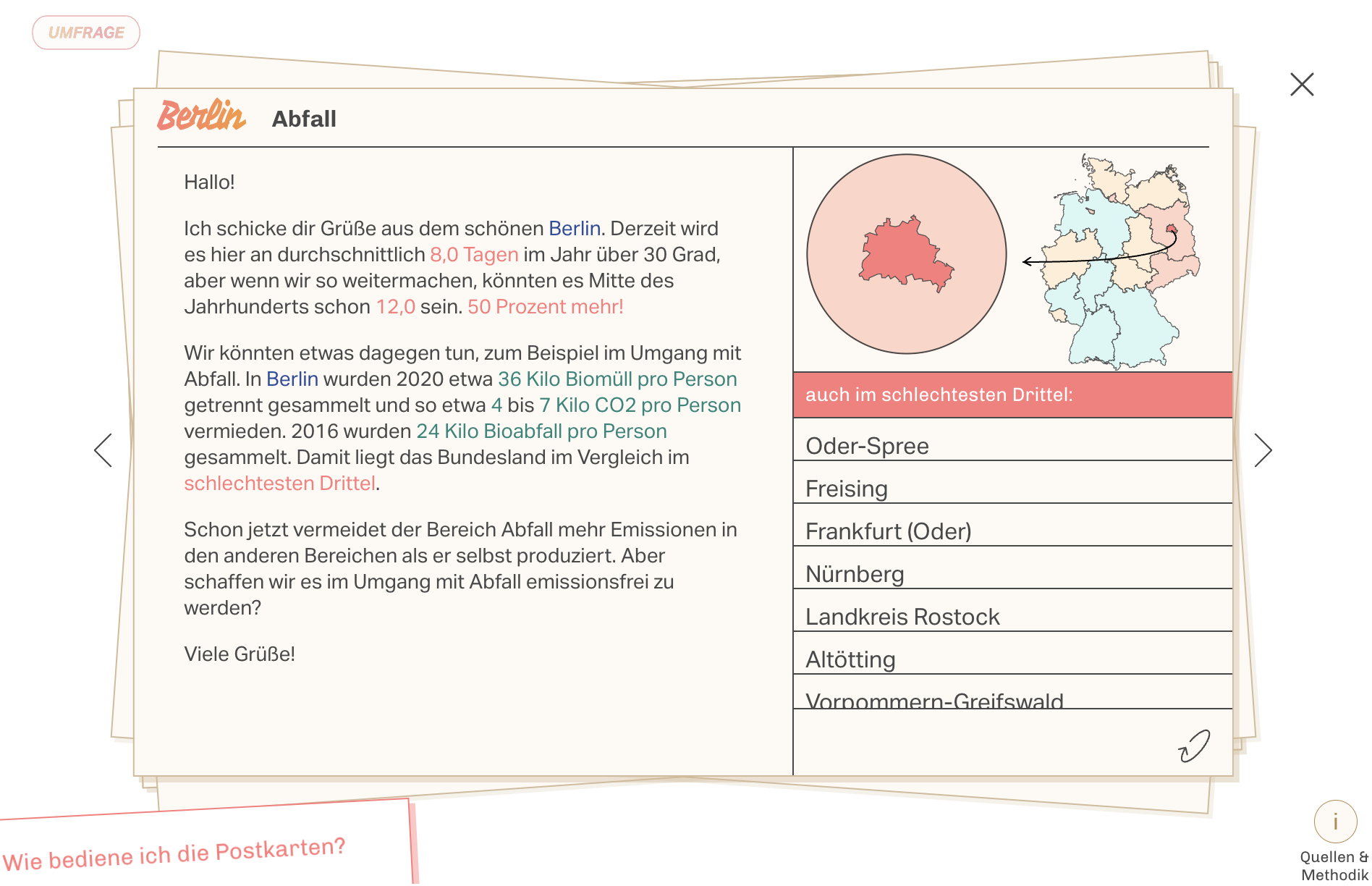Klimakarten From shock to shift
How well are we doing in mitigating the climate crisis and what are the projected climate futures in each district of Germany?
In collaboration with the newspaper taz, we designed and produced both physical and digital postcards containing visualizations covering various aspects of climate protection and mitigation in Germany. For each of the 401 districts and 16 states in Germany, the reader can explore climate protection postcards in the five sectors: energy, mobility, buildings, agriculture, and waste. The goal of our research is to study readers’ engagement with data visualizations on the topic of climate protection — across multiple media channels. A central ambition here is that the communication of climate change should not cause readers to feel anxious, numb, or even enter a state of shock, but develop an interest and engage locally with climate change and its ramifications.

MULTI-CHANNEL
As data visualization has become an important tool across several domains to discuss climate protection, mitigation, and adaptation, we explore its role in fostering readers’ engagement on these topics across several platforms. Drawing on research about climate journalism and data visualization, we identified a series of difficulties in effectively engaging readers: the lack of local content, the favoring of education over action framing, and little diversification of content across platforms.
Throughout the project, we extensively discussed visualization ideas and more broadly how data could be presented to readers within a holistic design frame. As a result, we developed the concept of climate protection postcards, photographic or illustrated cards typically sent via mail from holiday locations. The concept lends itself well both to physical and digital environments, giving us the possibility to design a virtually infinite number of artifacts that sliced indicators’ data according to districts.
These hybrid – both digital and physical – postcards are aimed specifically to readers, with the goal of engaging them in local climate protection. Our intention was to foster exploration and comparison of different regions to show the regional relevance of climate protection. The postcards are spread across various newspaper publication channels.


MULTIMODALITY
The journalists are able to embed the postcards on the homepage of the newspaper website and in articles via an iframe. They can alter the presentation of the postcards in four different modes and hereby customize them according to the needs of a given article.
The default mode without any set parameters shows a previewed data visualization of all five sectors for Germany.
The Landkreis mode displays one defined region with its five sectors. In this mode the journalists are able to decide which region should be shown, which can later be changed by the reader when exploring the data.
The comparison mode allows to compare up to five regions in one specific sector. Again, the sector and compared regions can later be exchanged by the reader.
When embedded in a topic-specific article, e.g. organic waste in Potsdam, journalists can select the respective region (Potsdam) and sector (Waste) and include the appropriate postcard in full size.
Additionally, more settings regarding the user interface and the shown postcard data can be set.

On the back of each postcard is a descriptive text of both the visualized data on the front side and the projected climate future of the selected region. A colored map of Germany enables the reader to jump to other regions. The coloring is based on the sector rating of the respective district. Green represents the upper third, yellow the middle and red the lower third.
Klimakarten has been a collaboration with the newspaper taz, in particular with Luise Strothmann, Lalon Sander, Jean-Philipp Baeck, and Jelene Malkowski. This research is connected with the project “VIDAN: Visual and dynamic arrangements of narratives”, which is funded by the Federal Ministry of Education and Research and conducted at FHP’s UCLAB.
